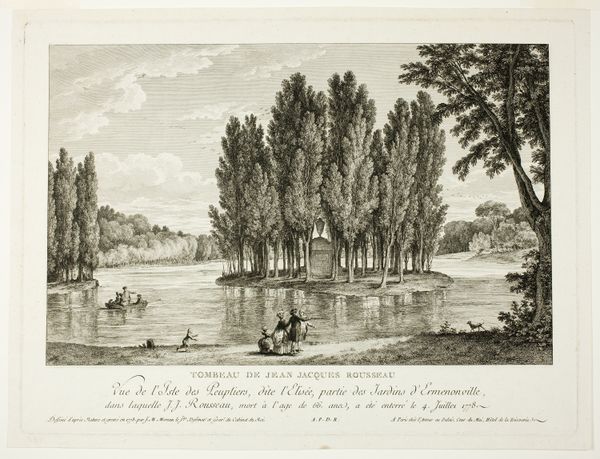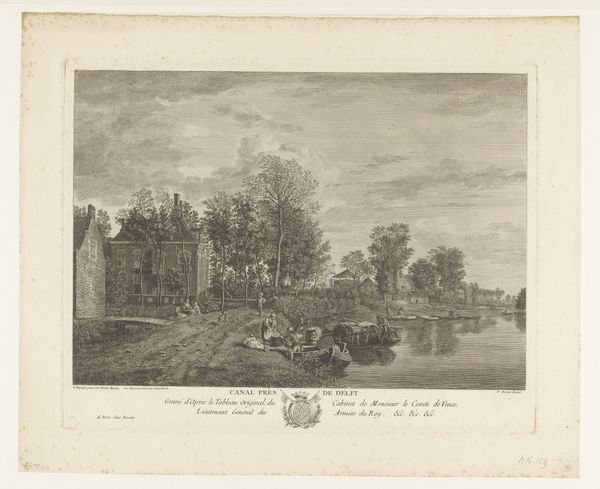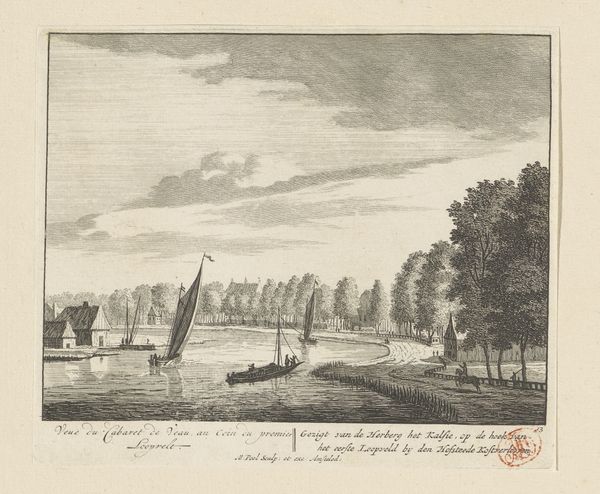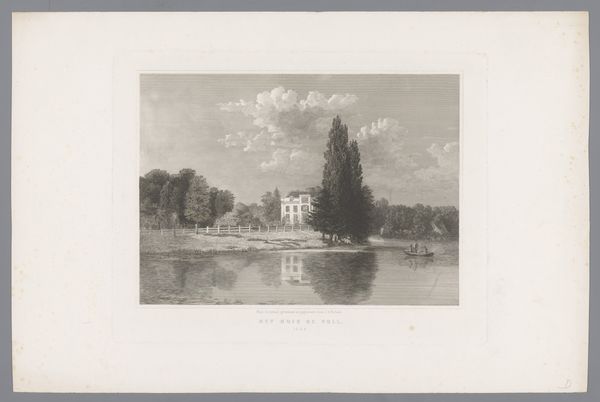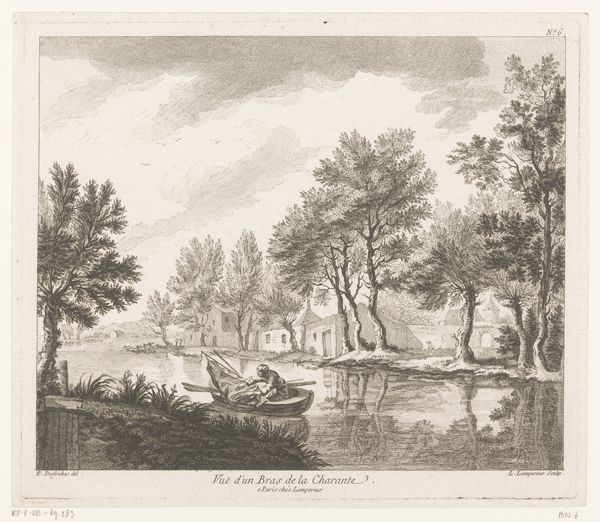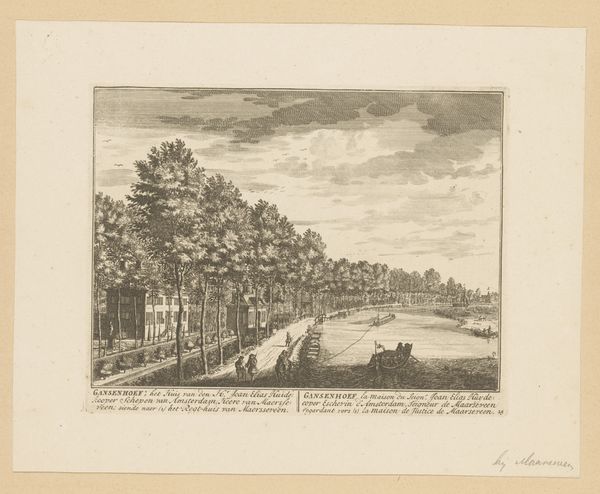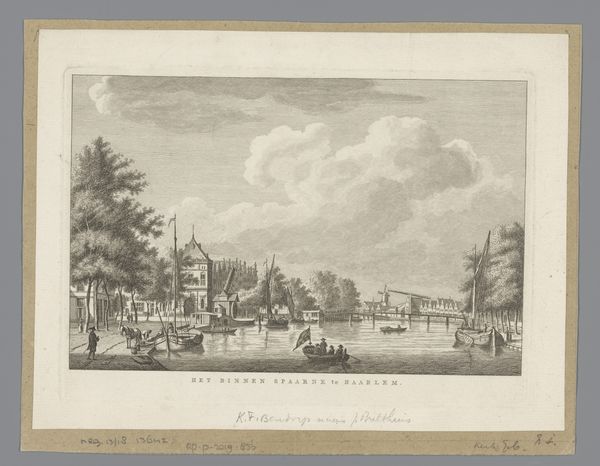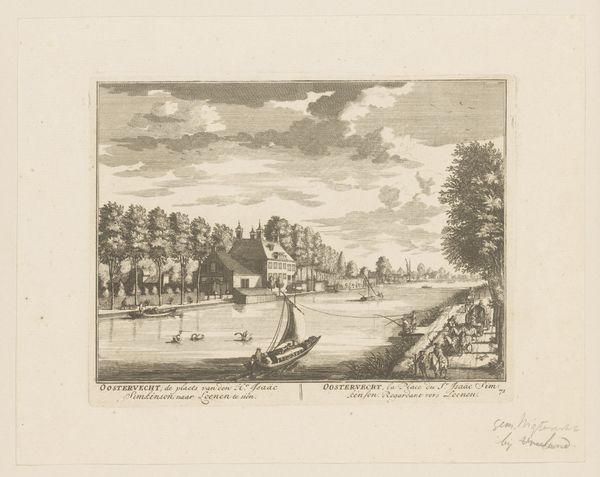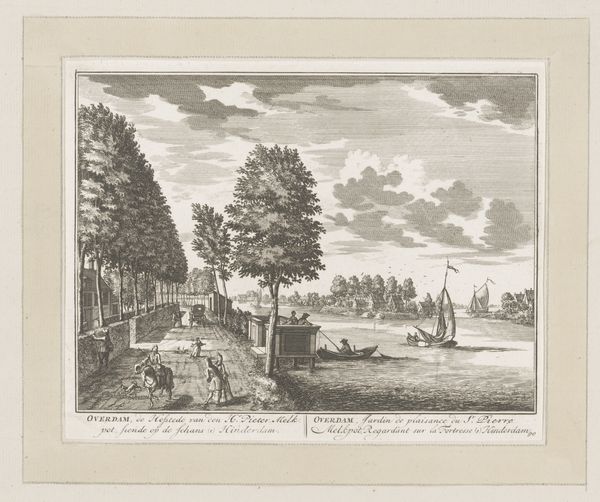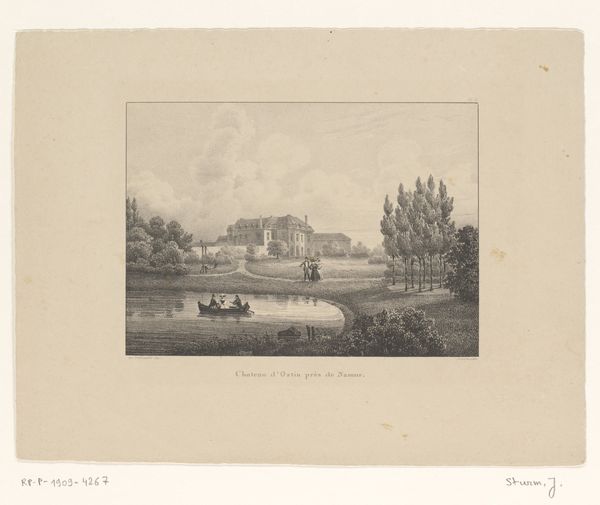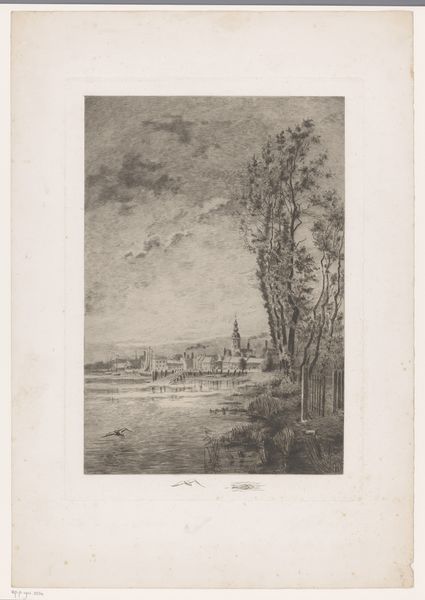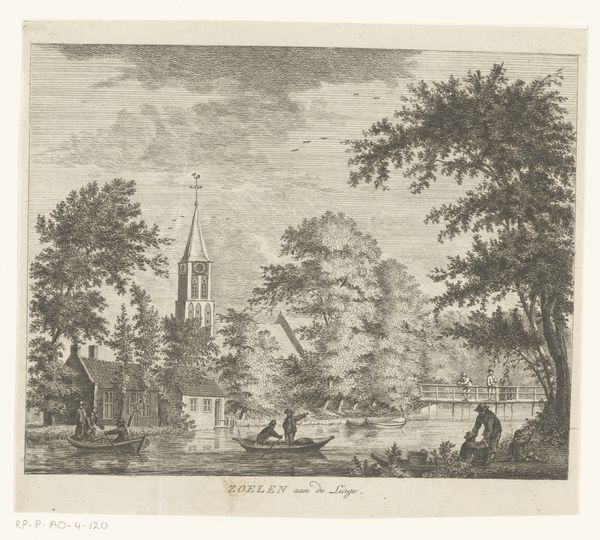
Graftombe van Jean-Jacques Rousseau op het Ile des Peupliers te Ermenonville Possibly 1778 - 1812
0:00
0:00
print, engraving
#
neoclacissism
#
ink paper printed
# print
#
old engraving style
#
landscape
#
romanticism
#
history-painting
#
engraving
Dimensions: height 260 mm, width 354 mm
Copyright: Rijks Museum: Open Domain
Curator: This image just whispers tranquility, doesn't it? A gentle hush over water, and a quiet little island. I’m immediately drawn into the scene. Editor: Indeed. What we're looking at is entitled, "Graftombe van Jean-Jacques Rousseau op het Ile des Peupliers te Ermenonville." It’s a print—an engraving—by François Guillaume Lardy, likely created sometime between 1778 and 1812. Curator: A memorial… for Rousseau? The father of Romanticism? Funny, because it feels almost neoclassical, like a scene carefully constructed for optimal contemplation. All those verticals... Editor: Neoclassical sensibilities were definitely in the air. Notice the composition—how the dark, textured foreground featuring human figures gives way to the calm expanse of water, guiding the eye to the idealized island where Rousseau’s tomb rests. Curator: That little island… it’s like a secret garden, cloaked in a stand of slender poplars. A kind of liminal space... a gateway between the living and the dearly departed, maybe? Editor: The figures in the foreground suggest just that – families visiting the site to pay respects or contemplate the philosopher's legacy. The artist uses them to add scale, and to humanize a place that could be simply, coldly monumental. Curator: And water! Symbol of life and renewal. I always get this notion of things running wild, an overflowing quality when thinking about his work. It’s comforting to see it reduced, calmed in this rendering. All neatly put together. It’s quite soothing, really, like a dream of solace. Editor: I see how this print marries the wild sentiments associated with Rousseau to the artistic standards of its time. The formal aspects—the carefully balanced light and shadow, the attention to detail—they all reflect this era’s way of creating meaning. It becomes an exercise in canonization as much as one in commemoration. Curator: Well, whether monument or testament, there is certainly something enchanting about that little island... and, ultimately, melancholic, as every tomb should be! Editor: Agreed. It is a poignant depiction that brings together philosophy, artistry, and landscape into a compact and compelling statement about memory and nature.
Comments
No comments
Be the first to comment and join the conversation on the ultimate creative platform.
